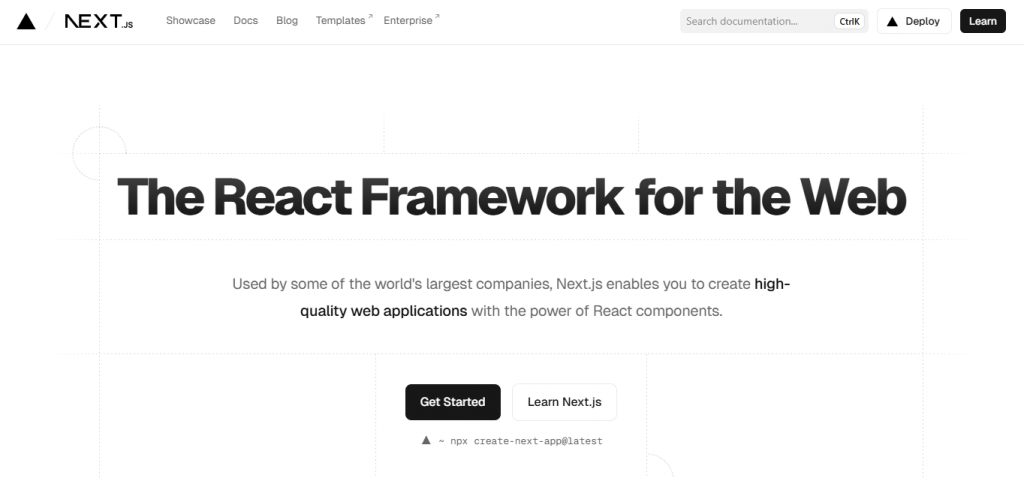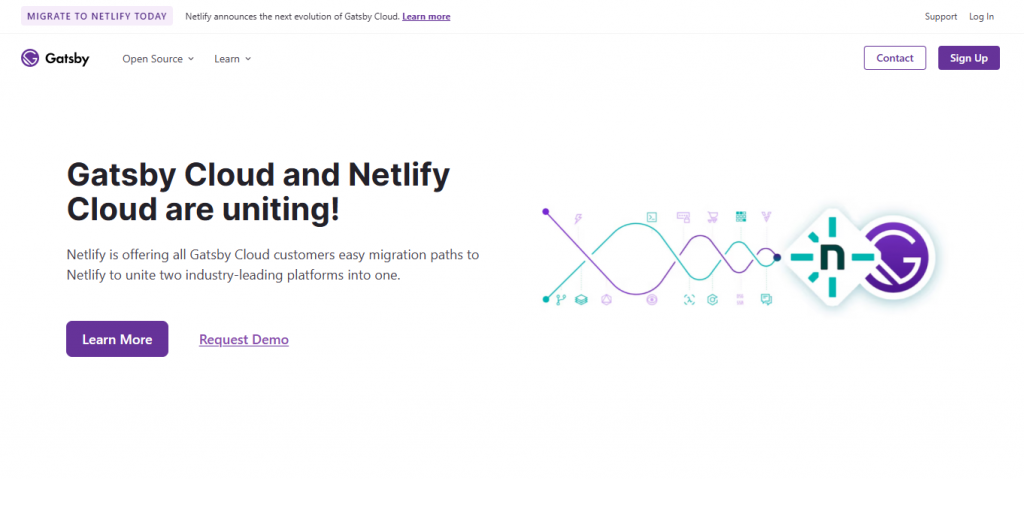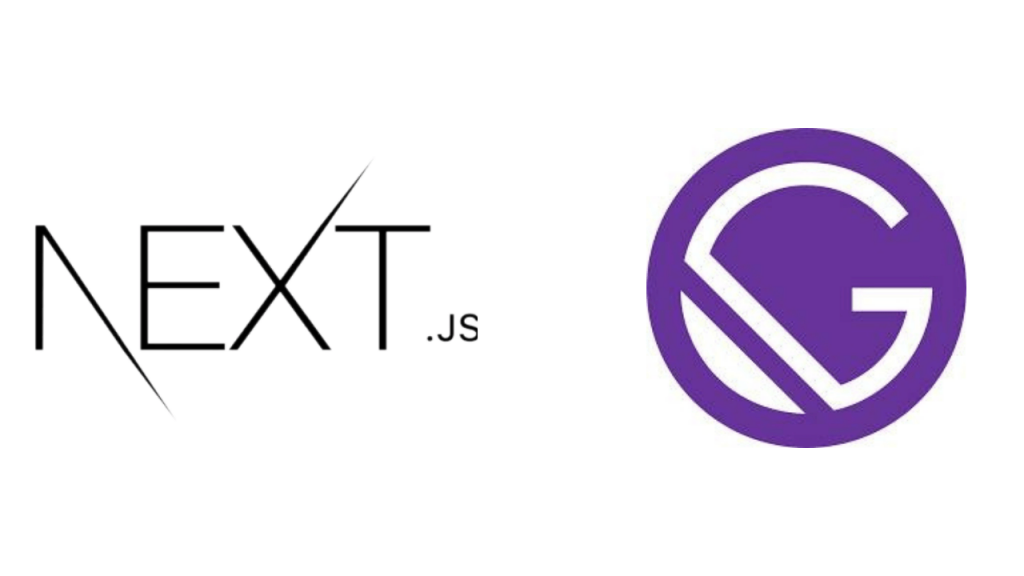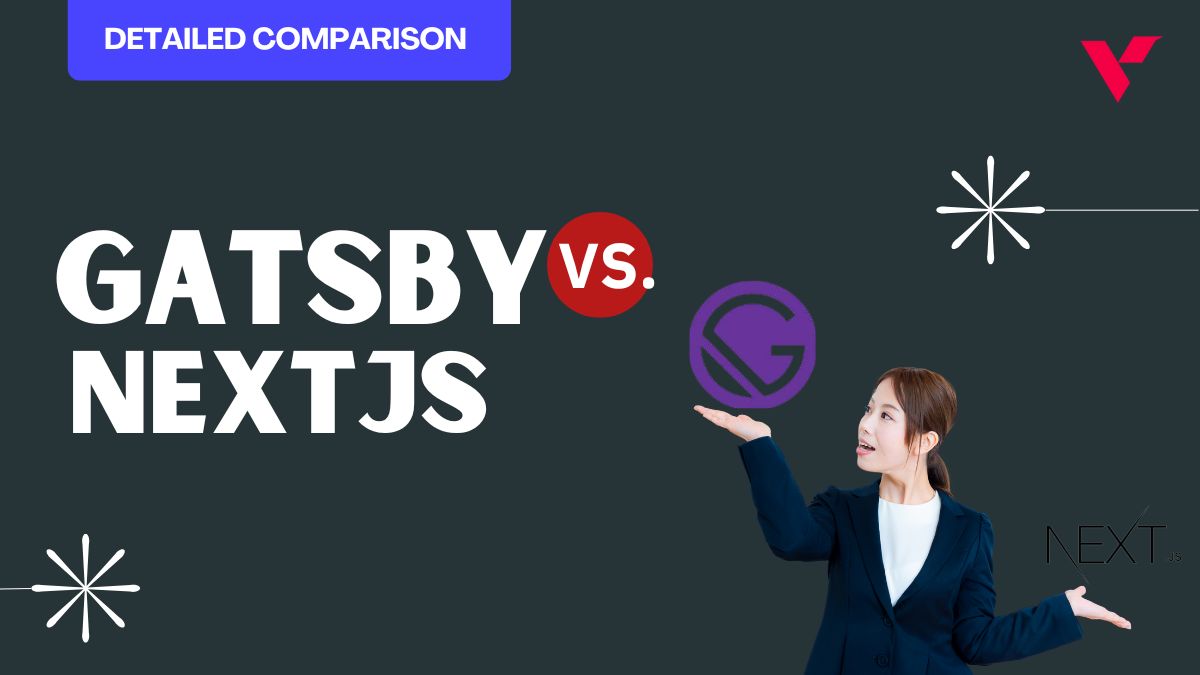Popular Tools by VOCSO
NextJS and Gatsby are two of the most well-known frameworks in the modern web development landscape, each designed to optimize the development process for different types of applications. Both are built on ReactJS, but they have distinct focuses. NextJS offers a flexible approach, supporting both server-side rendering (SSR) and static site generation (SSG), making it ideal for dynamic, data-driven applications such as e-commerce platforms, blogs, and dashboards. Gatsby, on the other hand, is geared towards static site generation, excelling in fast, pre-built pages that deliver high performance for content-heavy sites, such as marketing pages or portfolios. We will go through the Gatsby vs NextJS comparison to know the tradeoffs of using one over the other.
We will explore the key differences between NextJS and Gatsby in terms of architecture, performance, use cases, and overall developer experience. Whether you’re building a complex, interactive site or a simple, static one, understanding the features and strengths of each framework will help guide your choice based on your specific project needs.
Table of Contents
What is NextJS?

NextJS is an open-source ReactJS-based framework created by Vercel that allows developers to build web applications and websites with server-side rendering (SSR), static site generation (SSG), and Incremental Static Regeneration (ISR). This versatility makes NextJS ideal for projects that need a combination of static and dynamic content.
Key Features
Hybrid Rendering Options: Offers support for static site generation (SSG), server-side rendering (SSR), and Incremental Static Regeneration (ISR). This flexibility allows developers to choose the most appropriate rendering method based on the needs of each page.
File-based Routing: Pages in NextJS are automatically mapped to routes based on the file structure within the pages/ directory, making routing setup simple.
API Routes: NextJS allows developers to build API routes inside the same project. This enables server-side logic without a separate backend.
Automatic Code Splitting: Each page only loads the JavaScript necessary for that specific page, improving load times and performance.
Optimized Images: Built-in support for image optimization that automatically resizes and serves images in the most efficient format.
Built-in CSS and Sass Support: Support for CSS Modules, global CSS, and Sass to style components in a way that fits your project needs.
When to Use NextJS
NextJS is an excellent choice when you need a combination of static pages and dynamic content.
It’s ideal for building applications where SEO is a priority but also requires real-time data or frequent content updates.
Projects like e-commerce websites, dashboards, and large-scale applications benefit from NextJS flexibility.
Popular Sites Built with NextJS
Twitch: Used for their front-end to improve SEO and performance.
Hulu: To serve SSR content quickly and ensure scalability.
Trello: For its dynamic and real-time UI components.
What is Gatsby?

Gatsby is a ReactJS-based framework designed specifically for creating static websites. Gatsby pulls data from various sources like CMSs, APIs, and databases using GraphQL at build time, which results in a fully static site being generated. Gatsby is optimized for performance, with built-in support for Progressive Web App (PWA) features, image optimization, and an extensive plugin ecosystem.
Key Features
Static Site Generation (SSG): Gatsby’s primary focus is on static site generation. It pre-builds your site at compile time into static HTML, CSS, and JavaScript files, making it extremely fast.
GraphQL Data Layer: Gatsby uses GraphQL to pull data from any source, whether it’s markdown files, CMSs, APIs, or databases. This enables you to create a unified data layer across your entire site.
Optimized for Performance: Gatsby applies performance best practices like lazy-loading images, code splitting, and pre-fetching resources to ensure pages load as quickly as possible.
Built-in Image Optimization: Gatsby automatically optimizes images for you at build time, serving them in modern formats like WebP and optimizing their sizes.
Plugin Ecosystem: Gatsby has an extensive plugin ecosystem that allows you to extend functionality. Plugins can handle tasks like SEO, Google Analytics, CMS integrations, and more.
PWA Support: Gatsby automatically provides functionality to make your site a Progressive Web App, improving user experience, especially on mobile.
When to Use Gatsby
Gatsby is best suited for building content-heavy websites such as blogs, documentation sites, portfolios, and marketing websites.
If your project needs fast loading times, SEO optimization, and can rely on pre-generated static content, Gatsby is an ideal choice.
Popular Sites Built with Gatsby
Airbnb Engineering Blog: Airbnb uses Gatsby for their blog to achieve a fast and interactive experience.
ReactJS Documentation: The official ReactJS docs leverage Gatsby for their static site needs.
Shopify Polaris: Shopify’s design system documentation is built using Gatsby, ensuring scalability and performance.
Core Differences Between NextJS and Gatsby
NextJS and Gatsby are both ReactJS-based frameworks, but they have distinct differences that make each suitable for different types of projects. Below are the core aspects where these two frameworks diverge:
Framework Type: Both ReactJS
- NextJS: Built around ReactJS, NextJS is focused on hybrid applications. It supports server-side rendering (SSR) and static site generation (SSG), offering flexibility in how developers can handle dynamic content and SEO.
- Gatsby: Gatsby also uses ReactJS but is heavily focused on static site generation (SSG). It excels in building fast static websites by pre-rendering all the pages at build time, pulling data from various sources using GraphQL.
Routing Mechanism
- NextJS: Uses file-based routing, where the structure of the pages inside the pages/ directory directly translates to the routes of the application. This simplifies routing for developers.
- Gatsby: Also uses file-based routing, but Gatsby’s routing is focused purely on generating static routes based on file names, making it highly suited for static content and content management workflows.
Data Fetching
- NextJS: Provides multiple data-fetching methods such as getServerSideProps (for SSR), getStaticProps (for SSG), and getInitialProps. This flexibility allows developers to mix static and dynamic content.
- Gatsby: Uses GraphQL as its data layer, fetching data at build time and allowing integration with various CMSs, APIs, and databases. This makes Gatsby more suited for projects where data is pulled from multiple external sources and pre-generated.
Rendering Modes
- NextJS: Supports Server-Side Rendering (SSR), Static Site Generation (SSG), and Incremental Static Regeneration (ISR). Developers can choose between these options on a per-page basis, allowing for granular control over rendering.
- Gatsby: Primarily focused on Static Site Generation (SSG). Every page is built during the build process, making it incredibly fast but less flexible for dynamic content.
Configuration and Setup
- NextJS: Comes with a zero-config setup out of the box. Developers can get started without the need for complex configuration, making it easy to integrate with third-party tools, APIs, and databases.
- Gatsby: Requires more setup for configuration, especially when integrating with external APIs and CMS systems. However, Gatsby’s plugin ecosystem simplifies much of the setup by offering pre-configured integrations for popular services like WordPress, Contentful, and Shopify.
Performance and Optimization
Both NextJS and Gatsby are known for their emphasis on performance, but they achieve this in different ways.
NextJS Performance Features
- Automatic Code Splitting: NextJS automatically splits the code for each page, so only the required JavaScript is loaded, improving load times and performance.
- Optimized Images: NextJS has built-in support for image optimization, serving images in the most efficient formats and resizing them dynamically.
- Prefetching: NextJS automatically prefetches linked pages, meaning that when users navigate to a new page, it’s already pre-loaded in the background for a faster experience.
Gatsby Performance Features
- Pre-Rendering: Gatsby’s approach to performance is built around pre-rendering pages at build time, ensuring that every page is ready to be served as static HTML. This results in fast load times from the very first visit.
- Image Optimization: Gatsby optimizes images at build time, automatically compressing and resizing them to ensure minimal load times across devices.
- Lazy Loading and Prefetching: Gatsby uses lazy loading for images and other resources, reducing initial page load sizes and serving only the resources needed as the user scrolls.
SEO Capabilities
SEO is a crucial aspect of modern web development, as it helps websites rank higher in search engines. Both NextJS and Gatsby are designed with SEO in mind, but their approaches and capabilities differ.
NextJS SEO Features
- Dynamic SEO with SSR: NextJS enables server-side rendering (SSR), which means that content is rendered on the server and sent to the client as fully rendered HTML. This ensures that search engines can crawl and index dynamic content effectively.
- Customizable Head Tags: NextJS provides easy-to-use APIs for manipulating the <head> tags of your pages. Developers can add dynamic titles, meta descriptions, Open Graph tags, and other SEO-related meta information on a per-page basis.
- Automatic Sitemap Generation: NextJS doesn’t generate a sitemap automatically but supports generating one through third-party tools like next-sitemap. This helps search engines better index your pages.
- Rich Snippets and Structured Data: NextJS can integrate structured data (e.g., JSON-LD) easily, improving visibility in search engine results with rich snippets.
Gatsby SEO Features
- Static Site Generation for SEO: Since Gatsby pre-builds all pages at build time, every page is delivered as static HTML, which makes it very SEO-friendly. Search engines can easily crawl and index content, which contributes to better performance in search results.
- Automatic Image Optimization: Gatsby optimizes images during the build process, making sure that they are delivered in the most efficient format and size. This improves page load speed and user experience, both of which are factors search engines like Google consider in ranking.
- Metadata and Structured Data: Gatsby has powerful plugins like gatsby-plugin-react-helmet to manage SEO metadata on a per-page basis, including title, description, and Open Graph tags. Additionally, Gatsby supports structured data integration through plugins that help implement JSON-LD.
- Built-in Sitemap Plugin: Gatsby offers a built-in plugin (gatsby-plugin-sitemap) for generating sitemaps, making it easier to submit to search engines for better indexing.
Developer Experience
The developer experience plays a major role in choosing between frameworks. Let’s take a closer look at how NextJS and Gatsby compare in terms of ease of use, customization, and tooling.
NextJS Developer Experience
- Zero Config Setup: NextJS is designed to be zero-config out of the box. Developers can start building applications quickly without worrying about complex setups or configurations.
- Flexibility and Control: With NextJS, developers have complete control over routing, data fetching, and rendering modes. While this offers flexibility, it can also add complexity for beginners or developers not familiar with ReactJS.
- Rich Ecosystem: Thanks to ReactJS widespread use, NextJS has a large ecosystem, including libraries like Redux for state management, Axios for data fetching, and a variety of third-party tools for various purposes.
- Hot Reloading and Fast Refresh: NextJS supports fast refresh, which allows developers to see changes instantly without losing application state, making the development process smoother and faster.
Gatsby Developer Experience
- Opinionated Setup: Gatsby provides a more opinionated setup, where most of the decisions are already made for you, which is a double-edged sword. On one hand, it accelerates development for those building typical static sites; on the other, it may feel restrictive for developers who need more flexibility.
- GraphQL Data Layer: One of the standout features of Gatsby is its data layer, which uses GraphQL to pull data from various sources. While this simplifies integrating data from external CMSs and APIs, it can be challenging for developers unfamiliar with GraphQL.
- Rich Plugin Ecosystem: Gatsby has a vast plugin ecosystem, offering pre-built plugins for handling things like SEO, image optimization, and markdown files. This significantly speeds up development and reduces the amount of code developers need to write.
- Performance Optimized: Out of the box, Gatsby is optimized for performance with built-in image optimization, code splitting, and prefetching. Developers don’t need to do much to make their sites fast.
Community and Ecosystem Support
Both NextJS and Gatsby have strong community backing and ecosystems that cater to the needs of developers. However, the technologies they are built on and the use cases they target influence their ecosystems.
NextJS Community and Ecosystem
- Backed by Vercel: NextJS is developed and maintained by Vercel, which has heavily invested in building out the framework. This support ensures that the framework continues to evolve and receive improvements, including performance enhancements and better deployment features.
- ReactJS Ecosystem: Since NextJS is built on ReactJS, it benefits from the massive ReactJS ecosystem. There are numerous third-party libraries, components, tools, and tutorials available, making it easier to integrate new features and extend the framework’s capabilities.
- Vercel Integration: NextJS works seamlessly with Vercel’s deployment platform, providing developers with a hassle-free deployment experience. Vercel also includes analytics, performance monitoring, and optimizations tailored to NextJS apps.
- Active Community: The NextJS community is robust and active, with regular contributions and updates. There are numerous resources, including official documentation, blogs, and conferences, to help developers stay up to date.
Gatsby Community and Ecosystem
- Built for Static Sites: Gatsby has a specific focus on static site generation, and its ecosystem is designed around that. While this makes it ideal for blogs, portfolios, and documentation sites, it’s less flexible for highly dynamic web applications compared to NextJS.
- Plugins and Starters: Gatsby’s ecosystem is built around its plugin system, allowing developers to add a wide variety of features without extensive custom coding. There are plugins for CMS integration (WordPress, Contentful), SEO, image optimization, and more. The vast number of plugins streamlines development for static websites.
- GraphQL Integration: Gatsby’s use of GraphQL for data management is both a strength and a challenge. While it simplifies fetching data from various sources, it also introduces a learning curve for developers unfamiliar with GraphQL.
- Large Open Source Community: Gatsby’s community is one of its most significant assets, with active discussions, resources, and tutorials available across platforms like GitHub, StackOverflow, and forums. Its open-source nature also allows developers to contribute to the framework.
Deployment and Hosting
Deployment is a critical part of modern web development, and both NextJS and Gatsby offer tailored solutions to make the deployment process as smooth as possible.
NextJS Deployment
- Vercel Hosting: NextJS is closely integrated with Vercel, which provides a seamless hosting platform for NextJS applications. Vercel handles server-side rendering, static site generation, and automatic scaling, allowing developers to focus on building the application without worrying about infrastructure management.
- Custom Hosting Options: While Vercel is the preferred hosting platform for NextJS, it can also be deployed on other platforms like AWS, Netlify, and DigitalOcean. Developers have the freedom to choose the hosting solution that best fits their needs.
- Incremental Static Regeneration (ISR): One of NextJS standout features is ISR, which allows static content to be updated incrementally without needing a full rebuild. This is especially useful for sites with large amounts of content or frequently changing data.
- Serverless Functions: NextJS supports serverless functions out of the box, which can be used to handle API requests, allowing developers to deploy a fully serverless architecture.
Gatsby Deployment
- Gatsby Cloud: Gatsby Cloud is designed specifically for hosting Gatsby sites. It optimizes build times, provides real-time preview functionality, and integrates with third-party CMS platforms for seamless content management. Gatsby Cloud also includes analytics and performance monitoring tools.
- Static Site Hosting: Since Gatsby pre-builds all pages, it is ideal for static hosting solutions. Gatsby sites can be deployed to popular platforms such as Netlify, AWS, and GitHub Pages. These platforms offer excellent performance and scalability, as static sites are easier to cache and distribute.
- Build and Deploy Automation: Gatsby’s build system ensures that only changed pages are rebuilt, optimizing deployment times and reducing server load. It’s particularly well-suited for sites that do not require frequent real-time updates but benefit from fast and secure delivery.
- CDN-Optimized: Gatsby’s static sites are optimized for delivery via a CDN, ensuring fast load times and high performance across the globe.
Choosing Between NextJS and Gatsby

Choosing between NextJS and Gatsby depends on your project’s specific needs. Here’s a quick summary of when each framework excels. Here’s a breakdown of factors that might influence your decision:
- Familiarity with ReactJS or Other Frameworks: If your development team has experience with ReactJS then both frameworks are easy, Gatsby might be the more intuitive choice due to its React-based architecture. However, if your team prioritizes working with dynamic routing and server-rendered React applications, NextJS could better match your needs.
- Use Case (Static vs. Dynamic Content): For projects requiring static content, Gatsby excels with its GraphQL-powered static site generation, making it a strong contender for blogs and documentation. On the other hand, if your project demands server-side rendering for dynamic content or combines static and server-rendered pages, NextJS offers superior flexibility and performance.
- Performance and SEO Needs: Both frameworks provide robust SEO features. NextJS, with its hybrid rendering model, handles dynamic routing efficiently, giving it an edge for sites requiring dynamic, high-performance routing. Gatsby’s pre-rendered pages ensure great initial load speeds, ideal for content-heavy projects.
- Community and Ecosystem: NextJS boasts a rapidly growing ecosystem with strong community and Vercel’s backing, ensuring a solid support structure for scalable projects. Gatsby, too, has a thriving community and plugins, particularly catering to static site needs.
Conclusion
Both NextJS and Gatsby offer unique strengths depending on the type of project you’re building. NextJS shines in flexibility, performance, and its ability to mix static and dynamic content generation. It’s perfect for building highly interactive applications with a mix of server-side and static rendering. On the other hand, Gatsby excels in building static sites with optimal performance and SEO features, making it ideal for content-heavy websites that need fast, secure, and scalable delivery.
By understanding the differences in features, performance, SEO capabilities, and community support, you can make an informed decision on which framework is best suited for your web development needs.


















